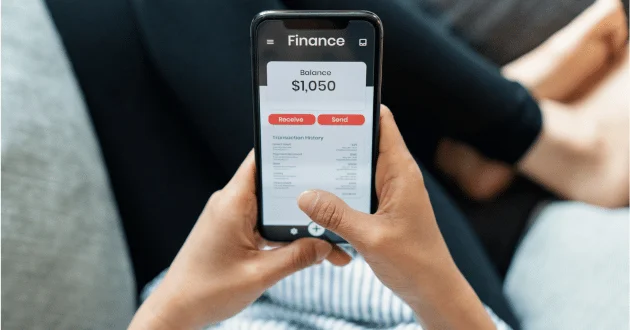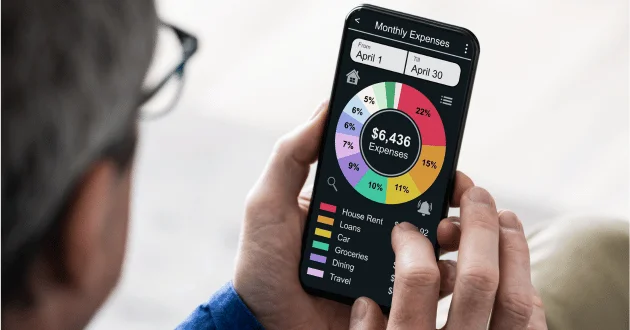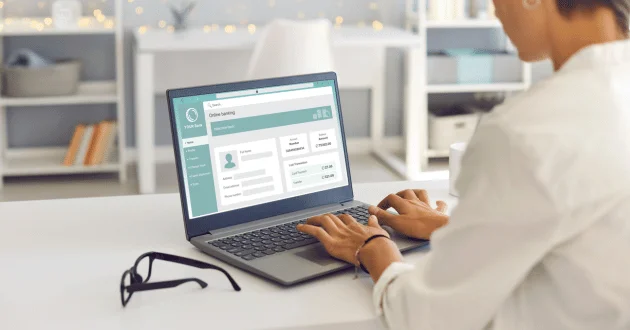
Managing your finances can be a daunting task. With bills to pay, investments to track, and budgets to maintain, it’s easy to feel overwhelmed. But fear not, for modern technology has paved the way for a solution: personal finance software. This in-depth guide will take you on a journey through the world of personal finance software, simplifying your financial management and transforming the way you handle your money. So let’s dive in!
- What is Personal Finance Software?
- Features to Consider When Looking for a Personal Finance Software
- Types of Personal Finance Software
- Conclusion
What is Personal Finance Software?
Personal finance software is a tool designed to integrate the financial aspects of your life in one platform. From tracking income and expenses, managing investments, creating budgets, to monitoring your financial goals, these applications provide an all-encompassing solution. They offer a way to organize and manage your financial data efficiently, providing a comprehensive view of your finances at a glance. Let’s explore the benefits, types, and key features of these software applications, as well as how to choose the best one for your needs.
Related article: Using Xero for Personal Finance: A Comprehensive Guide
Benefits of Using Personal Finance Software
Personal finance software brings forth several advantages for individuals aiming to have a firmer grip on their financial standing:
- Effective Management of Finances: Personal finance software allows users to manage all their financial accounts, including savings, checking, and retirement accounts, in one location. This comprehensive view helps individuals to have a clear understanding of their overall financial situation.
- Expense Tracking: With personal finance software, users can easily track their expenses. This means, whether it’s a grocery bill, a restaurant tab, or a monthly utility bill, these applications can record and categorize each expense, making it easier for individuals to understand where their money is going.
- Budget Creation: Personal finance software aids in creating realistic budgets based on income, spending habits, and financial goals. This facilitates users to allocate their resources effectively, promoting greater financial discipline and savings.
- Analyzing Spending Patterns: Over time, personal finance software can accumulate data to reveal spending habits. By identifying patterns, these tools can provide valuable insights, helping users make informed decisions about their expenditures, and encouraging better money management habits.
These benefits underline how personal finance software can greatly assist in navigating the complex world of personal finance, fostering more effective and mindful financial decision-making.
Features to Consider When Looking for a Personal Finance Software
As you delve into the realm of personal finance software, it’s crucial to understand the key features that set apart the best applications from the rest. These features enhance the functionality and usability of the software, ensuring that it caters to all your financial needs and preferences. In the following sections, we will discuss the essential features to look for in a personal finance software program, followed by a detailed exploration of the different types of personal finance software available in the market. Let’s explore some features to consider when looking for personal finance software:
User Interface and Navigation
The user interface is the gateway for users to interact with personal finance software. An ideal user interface should be intuitive, translating complex financial data into easy-to-understand visuals and information that users can easily digest and act upon. It should present all the necessary information in a clear, organized manner, prioritizing ease of use and readability.
Navigation, on the other hand, determines how users move around within the application. A well-structured navigation system is critical for an enjoyable user experience. Users should be able to efficiently access various sections and dive into specific sub-menus without confusion or unnecessary steps. This involves a clear, logical layout with well-labelled menus and sub-menus, and a consistent, predictable navigation pattern across the entire application. Ultimately, the goal is to let users focus on managing their finances, not struggling with the software’s interface or navigation.
Security Measures
Ensuring the security of your financial data is a top priority for personal finance software. It employs a variety of sophisticated security measures to protect your information from unauthorized access, loss, or theft. Here’s a look at some of these technologies:
Firewalls act as a first line of defense, monitoring incoming and outgoing network traffic based on predefined security rules. They help to block malicious traffic and safeguard your financial data from cyber threats.
Encryption is a method used to convert your sensitive data into an unreadable format, known as ciphertext. This ensures that even if someone does manage to gain unauthorized access to your data, they won’t be able to understand it without the unique decryption key.
Access Controls regulate who can access your financial data and what actions they can take with it. This includes requiring strong, unique passwords, implementing multi-factor authentication, and restricting certain features to authorized users only.
Intrusion Detection Systems (IDS) monitor network traffic for suspicious activity and send alerts when potential threats are detected. This allows the system to detect and respond quickly to potential security breaches.

Budgeting Tools and Reports
Budgeting tools and reports play a crucial role in painting a clear picture of your financial standing. These instruments offer a structured way to manage your income, expenses, savings, and investments, facilitating informed financial decisions.
- Spreadsheets: Spreadsheets are a traditional and straightforward tool for budgeting. They offer a high degree of customization, allowing you to personalize the layout, formulas, and categories to best suit your financial needs. These documents enable users to input income and expenses, categorize expenditures, track savings, and monitor financial goals. Spreadsheets also offer the ability to generate reports, offering insights into spending patterns, savings trends, and progress towards financial objectives.
- Budgeting Software: Budgeting software is a more advanced and automated alternative to spreadsheets. They offer a range of features, from linking directly to your bank accounts to auto-categorizing transactions, and providing real-time updates on spending and savings. These tools offer easy-to-read graphs, charts, and reports that visualize your financial health, making it easier to comprehend and act upon.
- Web-Based Platforms: Web-based platforms combine the benefits of spreadsheets and budgeting software, offering flexibility, accessibility, and real-time data. With cloud storage, these platforms allow for access from any device with an internet connection, making it easy to check and update your budget on-the-go. These platforms offer intuitive dashboards and comprehensive financial reports, providing a holistic view of your financial situation.
Connectivity with Banks, Credit Cards, and Other Financial Institutions
The ability to connect and synchronize with banks, credit cards, and other financial institutions is a key feature of personal finance software. This connectivity is typically facilitated through the use of Application Programming Interfaces (APIs) – a set of rules and protocols that allows different software programs to communicate with each other.
To set up and authorize this connectivity, the user first needs to provide the necessary details of their financial accounts such as bank account number and credit card details. The personal finance software then uses these details to establish a secure connection with the financial institutions’ servers via APIs. This process involves various authentication protocols to ensure secure transmission of data. This might include multi-factor authentication, token-based authentication, or OAuth (Open Authorization), a standard for access delegation commonly used in these scenarios.
Once the connection is established and authorized, the personal finance software can pull real-time transaction data directly from your financial accounts. This provides up-to-date information about your financial status, transactions, balances, and more, which are then categorized and presented in an easy-to-understand format within the software.
Automation Capabilities
Automation capabilities bring a significant shift in how personal finance software works, streamlining processes, reducing errors, and increasing efficiency. The advantage of automation lies in its ability to perform repetitive tasks without the need for human intervention. This not only saves valuable time but also increases productivity and accuracy, as the chances of human error are greatly diminished.
Automation enhances data accuracy, as it pulls and updates real-time data directly from linked financial accounts. This ensures that your financial status, transactions, and balances are always accurate and up-to-date. In effect, the automation capabilities of personal finance software play a pivotal role in increasing efficiency, enhancing accuracy, and improving overall financial management.
Goal-Setting Options
Personal finance software often incorporates various goal-setting options to assist users in achieving their financial objectives. These options provide a structured approach to setting, tracking, and achieving financial goals. Here are some common goal-setting strategies incorporated:
- SMART Goals: SMART stands for Specific, Measurable, Achievable, Relevant, and Time-bound. This strategy encourages users to create detailed financial goals that are not only clearly defined and quantifiable but also highly achievable, relevant to their financial circumstances, and tied to a specific timeline. For example, a SMART goal could be “Save $5,000 for a vacation by December 2023.”
- OKRs (Objectives and Key Results): OKRs is a goal-setting methodology widely used in businesses but can also be applied to personal financial goals. The objective is the ‘What’ (the goal you want to achieve), and the key results are the ‘How’ (steps to achieve the objective). For instance, the objective might be “Improve financial health,” and the key results could be “Increase savings by 10%,” “Reduce unnecessary expenses by 15%,” and “Invest 5% of income.”
- KPIs (Key Performance Indicators): KPIs are metrics used to assess the progress towards financial goals. In personal finance software, KPIs might include savings rate, debt reduction, investment growth, or credit score improvement. These KPIs provide a measurable way to track financial performance and progress towards goals.
By integrating these goal-setting options, personal finance software helps users create a clear roadmap to financial success. It allows for better organization, tracking, and evaluation of financial goals, making it easier to stay on track and make necessary adjustments along the way.

Mobile App Availability
The availability of mobile apps is a crucial aspect of personal finance software, extending its functionality and convenience to users on the go. These apps are typically compatible with diverse operating systems, notably iOS and Android, enabling a broad spectrum of users to maintain their financial management at their fingertips.
While the mobile app availability is usually wide-ranging, it may vary depending on the countries’ specific regulations and the software company’s operational reach. It’s crucial for users to check if the app is available in their residing country before proceeding with the download. Further, potential restrictions or limitations on availability may be imposed based on regional laws, app store policies, or the extent of localization provided in the app.
Cost/Pricing Structure
The cost or pricing structure of personal finance software can vary significantly based on the software’s features, complexity, and the level of customization it offers. Most software companies provide different pricing tiers to cater to the diverse needs and budgets of their user base.
Basic Tier: The basic tier is typically the most affordable option, often even offered free of charge, and designed for users who need fundamental features such as account tracking, budgeting, and basic reporting.
Premium Tier: The premium tier usually comes at a higher cost and offers advanced features like automated expense tracking, investment performance analysis, and custom financial planning tools.
Professional Tier: The professional tier is designed for advanced users who require comprehensive financial management solutions, including complex investment strategies, tax planning, and business financial management tools.
Always remember to review the fine print carefully to understand the full cost implications before choosing a personal finance software. This will help avoid any unexpected costs down the line and ensure you’re choosing a software that offers the best value for your money.
Customer Service and Support Options
Customer service and support are integral components of a successful personal finance software experience. These elements ensure that customers can seamlessly navigate the tool and resolve any potential issues or challenges that may arise. Key customer service and support options typically include:
- Phone Support: Customers can get in touch directly with a support representative over the phone. This method is generally preferred for urgent or complex issues that might require a back-and-forth conversation.
- Live Chat: Live chat offers real-time assistance, where customers can interact with a service representative through a chat interface, typically accessible on the software’s website or within the application itself.
- Email Support: Email support is a standard offering where customers can send detailed descriptions of their issues or queries, and receive responses within a stipulated timeframe. This method is often used for non-urgent inquiries or to document more complex issues.
- Self-Service Resources: These include FAQs, video tutorials, guides, and knowledge base articles. They are designed to empower users to solve minor problems independently without needing to reach out to customer service.
- Social Media Assistance: Support can also be provided through social media platforms. Many companies have dedicated support channels on platforms like Twitter, Facebook, and LinkedIn, where customers can reach out for assistance.
By providing multiple customer service and support options, personal finance software ensures that users can receive assistance in a manner most convenient to them, making the overall user experience smoother and more enjoyable.
Types of Personal Finance Software
There exists a diverse array of personal finance software in the market, each tailored to cater to different financial needs and user preferences. From budgeting tools to comprehensive wealth management solutions, these applications vary significantly in their features and functionalities. This section explores the different types of personal finance software and helps you understand their varied capabilities, aiding in choosing the software that best suits your financial goals and circumstances.
Online Banking Solutions
Mobile Banking
Mobile banking solutions are an integral part of online banking, providing users with the convenience of managing their finances from their smartphones. With a dedicated mobile banking app, users can undertake a host of financial tasks on the go. They can check account balances, transfer funds, pay bills, and even deposit checks using mobile check capture. Many of these apps also offer budgeting tools and spending trackers for improved financial management. The apps are typically encrypted and require user authentication, ensuring secure transactions.

Web-Based Banking
Web-based banking solutions offer a comprehensive suite of banking services accessible via a desktop browser. These platforms provide a wider screen view, making it easier to navigate through more complex tasks, such as generating detailed financial reports, setting up automatic payments, or managing multiple accounts simultaneously. Like mobile banking, web-based banking platforms prioritize security, with features such as two-factor authentication and encrypted connections to protect users’ data.
Budgeting and Tracking Tools
Budgeting and tracking tools are crucial for effective personal financial management. These tools provide insights into your income, expenses, savings, and investments, helping you stay on top of your financial health.
- Mint: Mint is a popular personal finance app that offers comprehensive budgeting and expense-tracking features. It syncs with your bank and credit card accounts, automatically categorizes transactions, and provides real-time updates on spending against budget. Mint also provides bill reminders, low balance alerts, and free credit score tracking.
- You Need a Budget (YNAB): YNAB operates on a unique budgeting philosophy, assigning every dollar a job. It emphasizes the importance of living on the previous month’s income and encourages proactive planning for both regular and irregular expenses. YNAB offers real-time access to data across multiple devices and provides detailed reports to track your progress over time.
- Quicken: Quicken is a comprehensive personal finance tool that offers extensive budgeting and expense-tracking functionalities. In addition to tracking income and expenses, Quicken allows for investment tracking, retirement planning, and property management. The software also features bill pay capabilities and the ability to export data to TurboTax.
- Personal Capital: Personal Capital bridges the gap between budgeting tools and comprehensive financial management solutions. Alongside tracking income and expenses, it provides a holistic view of your financial status, including investments, retirement savings, and net worth. Its built-in investment checkup tool and retirement planner make it particularly useful for long-term financial planning.
- Excel Spreadsheets: For those who prefer a manual approach, Excel spreadsheets offer a great deal of customization and control. Users can create their own budgeting and tracking templates to suit their specific needs. While it may not offer automatic syncing with your financial accounts, it compensates by offering complete control over your data analysis and presentation.
Each of these tools offers its own unique set of features and capabilities, catering to various facets of personal finance management. Choosing the right tool depends on your individual financial goals, preferences, and the level of detail you wish to track.
Credit Card Management Platforms
Credit card management platforms are specialized tools designed to help individuals monitor and manage their credit card usage effectively. These platforms offer a broad range of features and functionalities that aid in spending tracking, credit card analysis, and rewards optimization. They primarily function by aggregating data from the users’ linked credit card accounts, enabling a holistic view of their spending habits and patterns.
The key benefit of using credit card management platforms lies in their ability to facilitate informed financial decisions. By tracking spending, users can identify areas of excess expenditure and implement strategies to reduce unnecessary costs. Credit card analysis, another critical functionality, provides insights into the utilization of credit, highlighting any potential issues impacting the user’s credit score.
Tax Preparation & Management Solutions
Tax preparation and management involve a complex process that can be streamlined with the help of several types of solutions. These include software programs, consulting services, and cloud-based platforms.
Tax Preparation Software
Tax preparation software programs, like TurboTax or H&R Block, can be a cost-effective option for those with relatively straightforward tax situations. Robust and user-friendly, these programs guide users through a step-by-step process of entering their income, deductions, and credits. They often include built-in tools and resources to address common tax-related questions. However, while affordable, these solutions may not offer the level of customization needed for complex tax scenarios, such as those involving multiple income streams or intricate business transactions.
Consulting Services
Consulting services involve engaging a tax professional or a Certified Public Accountant (CPA) to prepare and manage your taxes. These services are typically more expensive than tax software but offer a high degree of personalization and expert advice. CPAs have comprehensive knowledge of tax laws and are trained to handle complex tax situations. On the downside, these services could be cost-prohibitive for individuals or small businesses with straightforward tax situations.
Cloud-Based Platforms
Cloud-based tax platforms like TaxSlayer or TaxAct Online offer a balance between the affordability of tax software and the personalization offered by consulting services. They allow for secure storage and accessibility of tax data from anywhere, at any time. These platforms often provide a range of plans catering to different tax preparation needs, from simple individual returns to complex business taxes. However, while these platforms are convenient, they may not be as robust as dedicated software or as personalized as consulting services.
Investment and Portfolio Management Platforms
Robo-Advisors
Robo-advisors are digital platforms that offer automated, algorithm-driven financial planning services. Platforms like Betterment or Wealthfront, use algorithms to determine your risk tolerance and then automatically allocate your investments accordingly. The key advantage of robo-advisors lies in their simplicity and affordability. They require minimal intervention, making them particularly suitable for novice investors or those who prefer a hands-off investment approach.
Online Brokerages
Online brokerages like TD Ameritrade, E*TRADE, or Fidelity allow investors to buy and sell securities like stocks, bonds, and mutual funds directly. They provide a wide range of investment options, enabling portfolio diversification. These platforms often provide extensive educational resources, advanced trading tools, and the ability to manage investments actively. However, they require a more hands-on approach and a certain level of investment knowledge.
Investment Tracking and Analysis Platforms
Investment tracking and analysis platforms like SigFig or Personal Capital provide comprehensive oversight of your investment portfolio. These platforms aggregate data from various accounts, providing a holistic view of your investments. They offer features like performance reporting, fee analysis, and asset allocation review, aiding in informed decision making and risk management.
Debt Payment Assistance Applications
Debt payment assistance applications are an important tool that help individuals manage and reduce their debt effectively. These applications provide a structured and organized approach to assist in debt repayment.
Application Process
The application process for debt payment assistance is generally straightforward, but requires careful attention to detail.
- Registration: The first step entails registering on the application platform by providing basic personal information including your name, contact details, and social security number.
- Income Details: You need to provide details about your income. This includes your monthly earnings, any other sources of income, and frequency of income.
- Debt Information: Next, you need to provide information about your outstanding debts. This includes loan amounts, interest rates, and the names of your creditors.
- Budget Information: These applications also require information about your monthly expenses. This includes rent or mortgage payments, utility bills, grocery expenses, and any other recurring expenses.
- Submission: After entering all the required details accurately, you can submit the application for review.
Documentation Required
Documentation is a critical part of the application process. The following documents are typically required for successful application submission:
- Proof of Income: Pay stubs, bank statements, or other documents that verify your income.
- Debt Statements: Recent statements for all of your outstanding debts, including loans and credit cards.
- Expense Proof: Documents that verify your monthly expenses, such as utility bills, rent receipts, or mortgage statements.
By navigating the application process step-by-step and providing all necessary documentation, you can effectively use debt payment assistance applications to manage and reduce your debts.
Conclusion
In conclusion, this report has explored various tools and platforms in the realm of financial management, their features, and their uses. The key findings indicate the importance of tax software, consulting services, and cloud-based platforms in tax preparation, each with their unique benefits and drawbacks. Robo-advisors, online brokerages, and investment tracking platforms have emerged as effective tools for investment and portfolio management, offering varying degrees of automation, control, and complexity. Meanwhile, debt payment assistance applications are highlighted as critical in helping individuals manage and reduce debt effectively.


